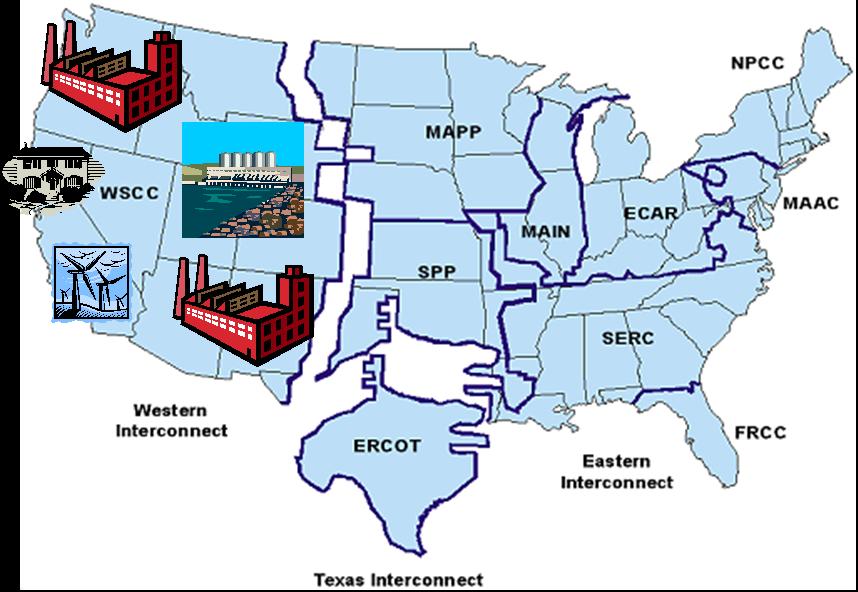Project Description
 In
the past one could model the electricity system in terms of a few sources,
a transmission network and relatively few sinks (groups of customers with
similar service-levels). This system is, however, evolving to one with many
sources with widely varying capacities and costs, and a huge number of consumers
dynamically adjusting their demand based on prices and environmental conditions.
The old model is no longer adequate. New research is needed that brings to
bear economics, control theory and distributed systems to address this problem.
The goal of this project is to investigate the possibility of developing a
framework for designing incentives for electric power networks and their associated
markets that provides robust and efficient power generation while rewarding
efficiency and green power production. Possible technical thrusts of the project
might be take first steps in one or more of the following areas:
In
the past one could model the electricity system in terms of a few sources,
a transmission network and relatively few sinks (groups of customers with
similar service-levels). This system is, however, evolving to one with many
sources with widely varying capacities and costs, and a huge number of consumers
dynamically adjusting their demand based on prices and environmental conditions.
The old model is no longer adequate. New research is needed that brings to
bear economics, control theory and distributed systems to address this problem.
The goal of this project is to investigate the possibility of developing a
framework for designing incentives for electric power networks and their associated
markets that provides robust and efficient power generation while rewarding
efficiency and green power production. Possible technical thrusts of the project
might be take first steps in one or more of the following areas: